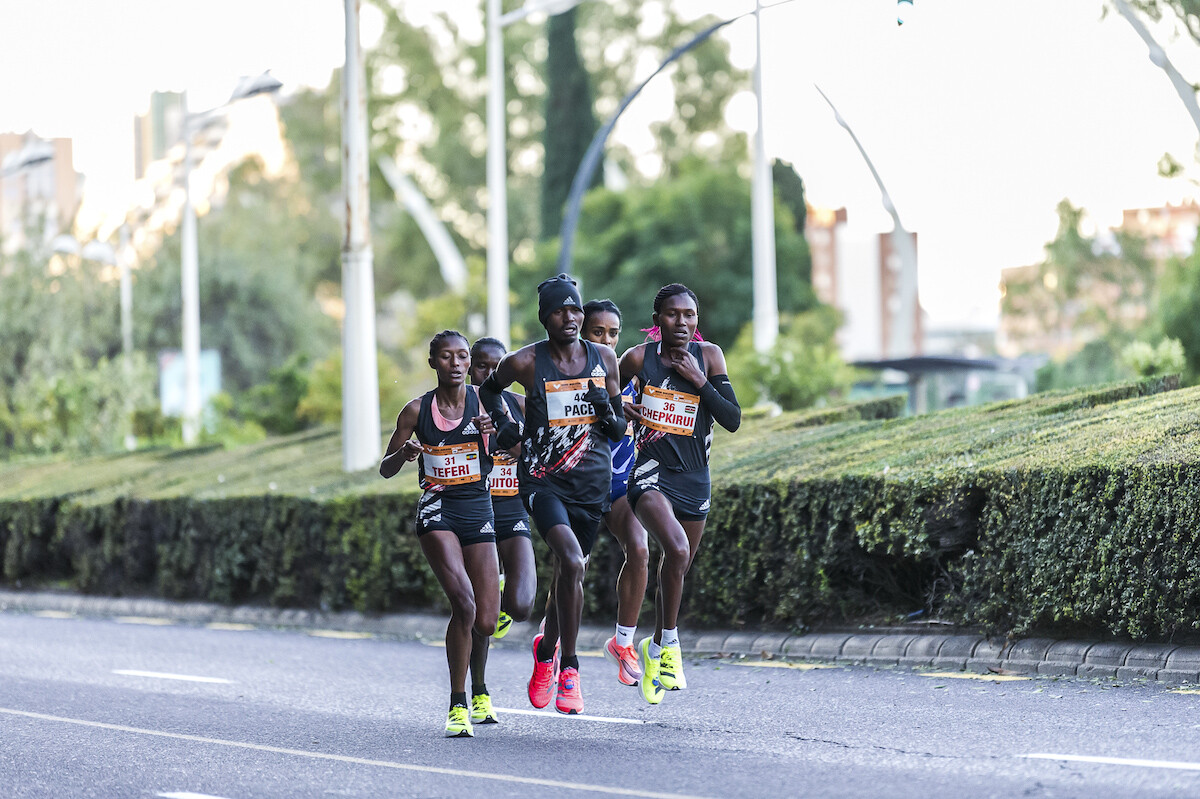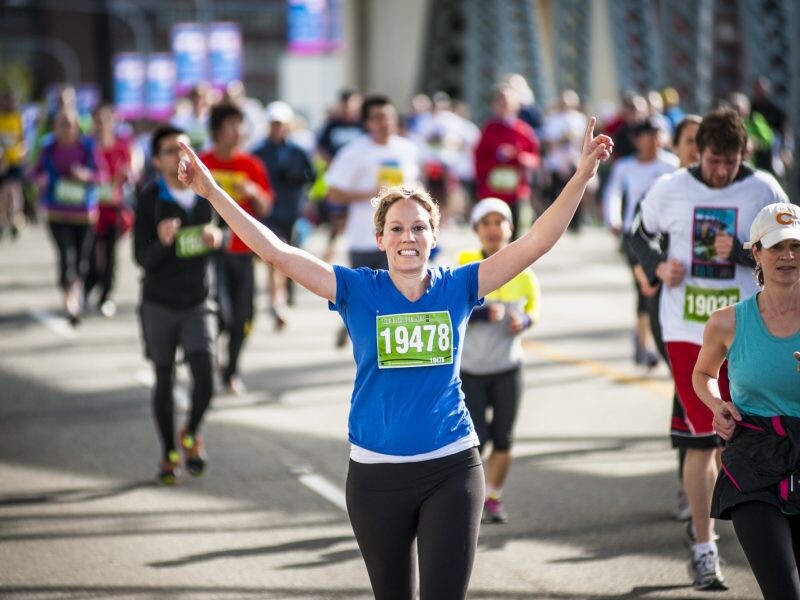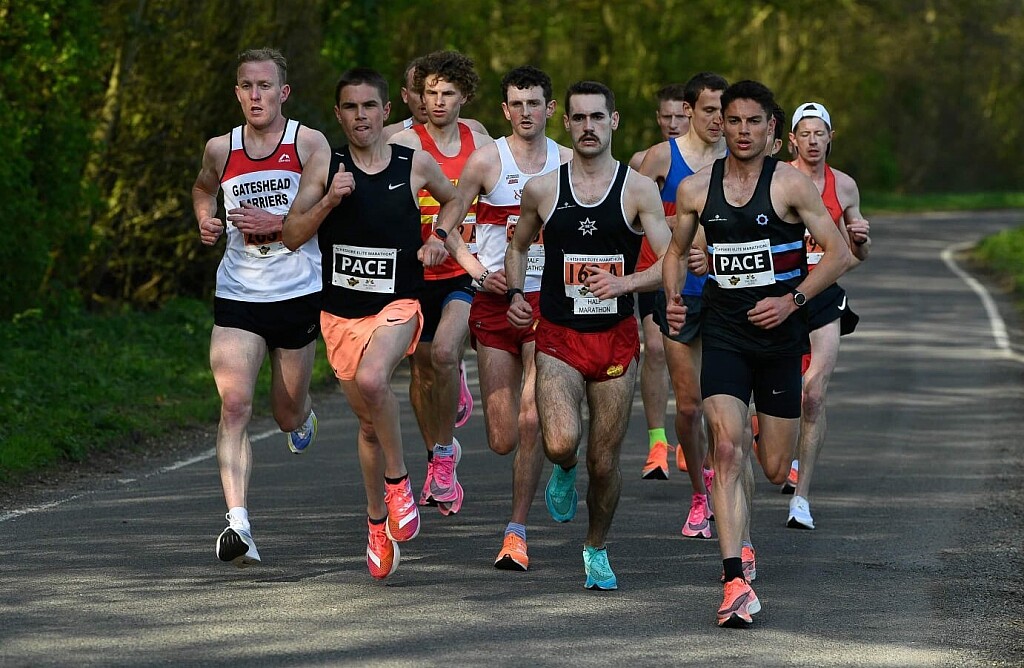Running News Daily
Running News Daily is edited by Bob Anderson. Send your news items to bob@mybestruns.com Advertising opportunities available. Train the Kenyan Way at KATA Kenya and Portugal owned and operated by Bob Anderson. Be sure to catch our movie A Long Run the movie KATA Running Camps and KATA Potato Farms - 31 now open in Kenya! https://kata.ke/
Index to Daily Posts · Sign Up For Updates · Run The World Feed
The key to pacing your marathon
The key to a good marathon isn’t just about the fuelling, the training and the shoes, pacing matters too. Fast Running gives you the low-down on how to get to the finish as quickly as you can.
If you’re training for a marathon, chances are you’re well aware of the importance of pacing yourself during the race. After all, there’s nothing worse than hitting “the wall” halfway through and having to drag yourself to the finish line. But figuring out the right pace for you can be tricky, especially if you’re a beginner or if you’re not sure what to expect.

So how do you find your perfect rhythm on race day?
First things first: let’s define what we mean by pacing. In running terms, pacing refers to the speed at which you run during a race or training run.

It’s important to have a consistent pace throughout the marathon, rather than starting out too fast and burning out later on. This is where many runners go wrong – they get caught up in the excitement of the race and push themselves too hard at the beginning, only to pay for it later on.
So how do you find your ideal pace?
One way is to use a pacing chart or calculator, which can give you a rough estimate of how fast you should be running based on your recent training times. These tools can be helpful, but keep in mind that they’re just estimates and may not take into account factors like terrain, weather, and your current fitness level if you’ve had a great training block since your last race.
Another way to determine your pace is to use sessions like Yasso 800s or a marathon pace tempo, but looking at cardiac drift during the run. If you can run your goal marathon pace for a decent distance, say 8-10 miles, without seeing much drift in the heart rate or effort required tor sustain this pace then it is a good sign you’re in the right ball park.
If you’re seeing a lot of drift, even 5-6 miles into that marathon pace run, then it’s worth considered if the pace is a bit too spicy, or even looking at what is causing the rise in heart rate or effort, as this could also be other factors like heat, dehydration, fuelling etc (which can also be factors on race day too).
Lastly, consider the other factors beyond just fitness and legs. What pace can you continue to eat gels and drink sports drink at? If you’re fitness and training say you should run X minutes per mile, but you can only keep fuelling 10-15 seconds a mile slower, then think about what will be limiting factor over the course of your race.
But what about runners of different abilities and speeds?
How do you determine the right pace for you? It can all depend on experience and where you at in your running journey but here are some guidelines for different athletes.
Beginner runners: If you’re new to running or are training for your first marathon, it’s important to start out slow and build up your endurance. Aim for a pace that feels comfortable and sustainable, and don’t be afraid to walk if you need to. Remember, the goal is to finish the race, not to set a personal best time.
Experienced runners: If you’ve been running for a while and have completed a few marathons, you probably have a good idea of what pace works for you. Still, it’s important to pay attention to your body and make adjustments as needed. If you’re feeling strong, you might be able to push yourself a little harder. But if you’re feeling tired or sluggish, it’s okay to ease up and take it a bit easier.
Fast runners: If you’re a seasoned runner with a lot of speed and endurance, you might be tempted to push it from the start. But beware of the temptation to go too fast too soon – even the most experienced runners can hit “the wall” if they push themselves too hard. It’s better to start out at a slightly slower pace and then pick it up as the race goes on. This way, you’ll have more energy left in the tank for the final stretch.
Keeping the game plan in place when the gun goes
Now that you have an idea of how to find your ideal pace, let’s talk about some strategies for staying on track during the marathon. We all know from Mike Tyson that “everyone has a plan until they get punched in the face” but what is less clear is why the vast majority of distance runners treat the starting gun like someone has punched them straight on the nose.
These are some techniques that might help you stay on track in the early stages and keep it going strong in the final stages.
Check your watch
It can be tempting to ignore your watch during the race and just go by feel, but checking your pace every mile or so can help you stay on track. If you’re running slower or faster than you should be, you’ll know to adjust your pace accordingly.
But also remember that GPS can be inaccurate, especially in big cities. If the marathon has mile or kilometre markers than you can have some landmark times to check to make sure everything is in-sync. Knowing what time you should pass through 5,10,15k and halfway will mean you can quickly check the time at that set distance marker and you know it’s accurate… hopefully.
Run even splits
This means running the same pace for each mile of the race, but keep in mind that it’s not always possible (or advisable) to run even splits, especially if the course is hilly or there are other factors that might affect your pace. We know the chump who runs the horrendous negative split and still gets a PB is given some kind of hero status, but it’s not necessarily the best PB they could have achieved on the day.
We’re not saying you have to get there holy grail of a negative split, but aiming for even splits and then limiting how much you fade in the second half can be a great race tactic. You just need to look at how the race is often won at major city marathons, with the winner usually being the one who either picks up the pace after 35km, or just slows the least of the front bunch.
Use distractions and use the crowds
If you’re struggling to maintain your pace, try distracting yourself with music, conversation, or other distractions. This can help take your mind off the fatigue and help you focus on something else. Just be careful not to get too distracted and lose track of your pace altogether. This isn’t just a jog in the park, you want a PB.
If you’re running in a crowded race, use the energy of the spectators to your advantage. Let their cheers and encouragement carry you through the tough parts of the race. Just be sure to thank them with a smile or a wave as you pass by. Or maybe just a grimace and an effort to not spray them with a snot-rocket as you pass.
Reflection is key
After all is said and done, with 26.2 miles run (tight rhymes), it’s important to sit down and reflect on how things went. Be honest wit yourself about your pacing and ask the tough questions. Could I have started more sensibly? Did I hit the wall or have a massive drop off in the second half?
It might be easier to blame outside factors, things you can’t control, but it doesn’t help you progress. Look at everything you can control, your pacing, training, fuelling etc and write down three things you did well, and three things you might improve for next time.
by Fast Running
Login to leave a comment




